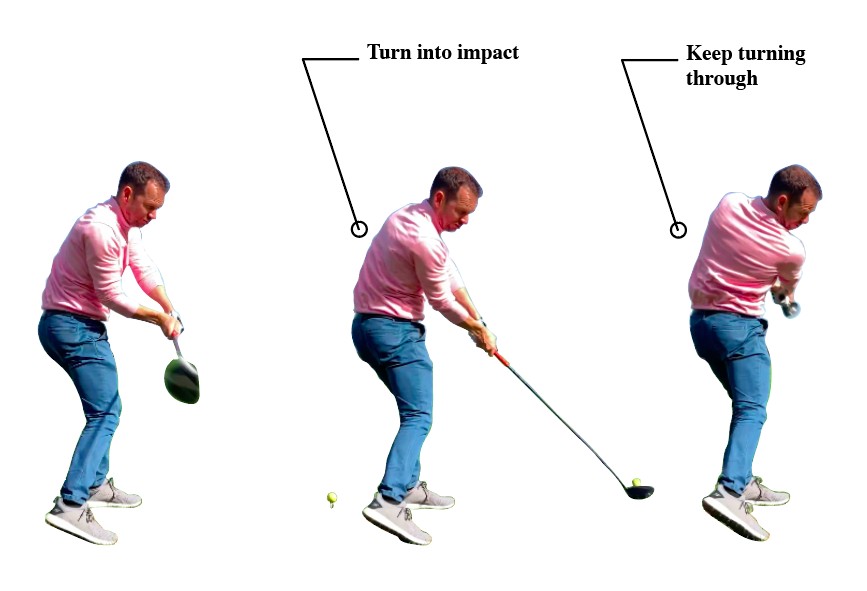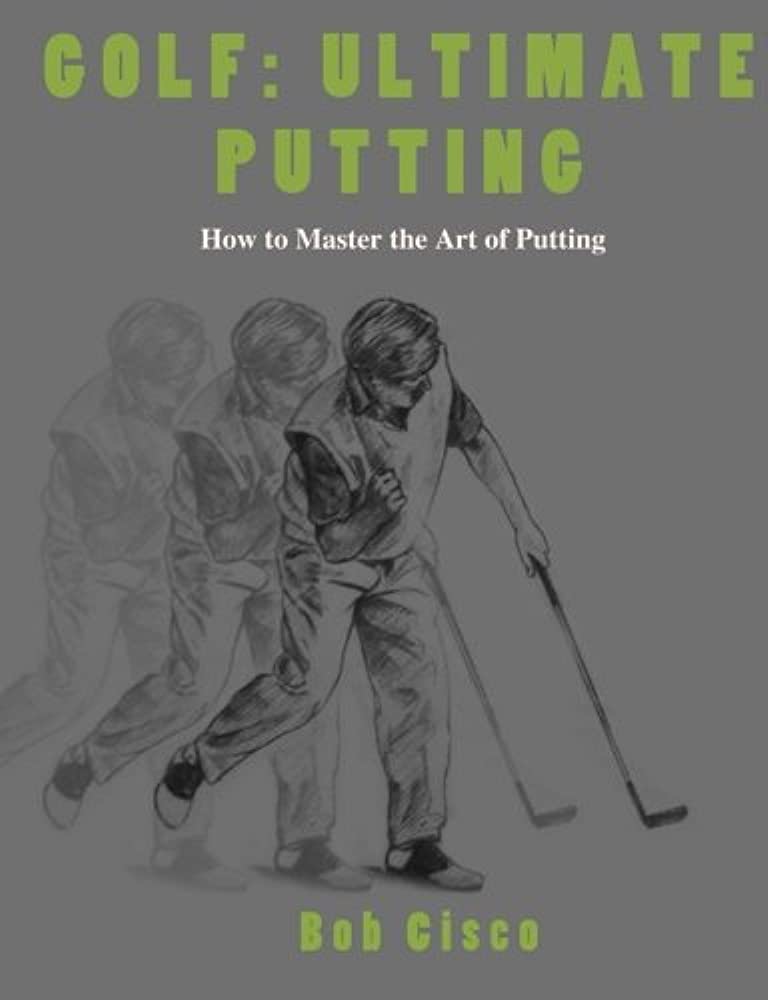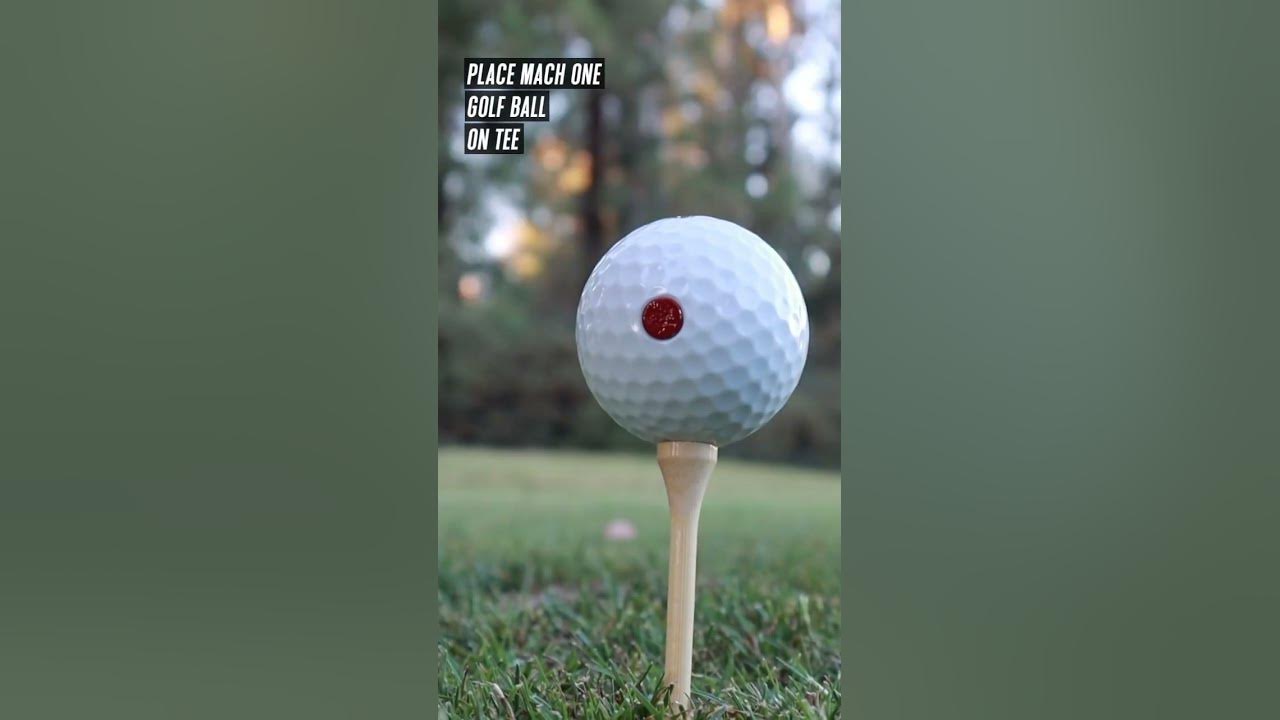Mastering Iron Shots: A Beginner’s Guide to Hitting Golf Balls
To hit a golf ball with an iron as a beginner, focus on the correct stance and grip, aim for the ball’s center, and swing smoothly with a straight leading arm. With practice and patience, one can improve their accuracy and distance.
Golf is a game that requires mental focus, precision, and technique. One of the most fundamental skills to master is hitting a golf ball with an iron club. It may seem daunting at first, but with proper guidance and practice, beginners can develop a consistent and powerful swing.
In this article, we will provide a step-by-step guide on how to hit a golf ball with iron for beginners. From the correct stance and grip to the swing and follow-through, we will cover all the essential elements of a successful golf shot. Whether you are just starting or looking to improve your skills, this guide will help you hit the ball like a pro.

Credit: golfinsideruk.com
Understanding Iron Shots
Description Of Iron Clubs And Their Uses
Iron clubs are essential in a golfer’s bag, and they are identified by their numbering system. Irons are typically used for approach shots, where the golf ball is no longer on the tee. Here are some points to consider when using iron clubs:
- Irons are numbered from 1 to 9, with the lower numbers having a lower loft, which means they will hit the ball farther.
- The different iron club types are: Pitching wedge, sand wedge, gap wedge, and lob wedge.
- Pitching wedges have a loft of around 45 degrees and are useful for shots ranging from 125 to 140 yards.
- Sand wedges have a higher loft, typically around 55 degrees, and are designed to help a player get out of the sand or bunker.
- Gap wedges have a loft between the pitching wedge and sand wedge and are used for shots ranging from around 110 to 125 yards.
- Lob wedges have a higher loft than sand wedges and are used for short shots around the green or out of deep rough areas.
How Iron Shots Differ From Wood And Hybrid Shots
Iron shots are different from wood and hybrid shots in terms of distance and height. Here are a few key differences between iron, wood, and hybrid shots:
- Iron shots are typically shorter in distance than wood and hybrid shots.
- Iron shots are hit with less speed than wood and hybrid shots.
- Iron shots have more loft than wood and hybrid shots, which makes the ball go higher.
- Iron shots are used for shorter approach shots to the green, while wood and hybrid shots are used for longer shots from the tee area or fairway.
Importance Of Proper Alignment And Stance
The alignment and stance for hitting iron shots are crucial to a golfer’s success. Here are some tips on setting up your alignment and stance for iron shots:
- Always place the ball in the center of your stance, and take a stance that is slightly wider than shoulder-width apart.
- Keep your feet, knees, hips, and shoulders parallel to the target line.
- Position the ball so that the clubhead hits the ball in the center of its face.
- Aim slightly left of your target if you’re right-handed (and right if you’re left-handed)
- Maintain a consistent spine angle during the shot, and keep your weight on the balls of your feet.
Make sure to practice proper alignment and stance during your iron shots routine. It may feel uncomfortable and awkward at first, but with repetition, you’ll develop muscle memory and be hitting better iron shots in no time.
Mastering The Swing
Explaining The Components Of A Good Iron Swing
To hit a golf ball with an iron club, you need to master the art of a proper swing. A good iron swing must include the following components:
- Grip: Hold the club with a relaxed grip, which allows for proper wrist movement.
- Stance: Position your feet shoulder-width apart and distribute your weight evenly on both feet.
- Posture: Stand tall with a slight lean from your hips towards the ball, and ensure that your chin is up.
- Backswing: Start the backswing by turning your shoulders, ensuring that your clubhead moves inside the target line.
- Downswing: As you begin the downswing, start by shifting your weight towards the target, then initiate the movement with your hips while keeping your arms tucked in.
- Impact: At the point of impact, your weight should be shifted towards your front foot, and your hands ahead of the ball.
- Follow-through: Complete your swing by rotating your hips and finishing with your arms outstretched in front of you.
Tips For Improving Swing Speed And Accuracy
Improving your swing speed and accuracy is a gradual process that requires consistent practice. Here are some tips to help you improve both:
- Use a lighter grip on the club and keep your wrist hinge loose to increase your swing speed.
- Practice your swing at different speeds to help with control and consistency.
- Keep your eyes on the ball throughout the swing to ensure accuracy.
- Use alignment sticks or markers to help you aim correctly.
- Practice your swing in front of a mirror to help visualize your form and improve your posture.
- Make use of training aids such as weighted clubs or impact bags to help strengthen your swing muscles.
Common Mistakes To Avoid
As a beginner, you’re bound to make a few mistakes while learning how to swing. Here are some common mistakes to avoid:
- Gripping the club too tightly restricts wrist movement and affects swing speed.
- Taking too long of a backswing, which reduces accuracy.
- Focusing too much on power and sacrificing accuracy.
- Lifting your head too early may cause you to hit the ball fat or thin.
- Not rotating your hips enough during the downswing, which reduces swing speed.
- Allowing your arms to fly out during the follow-through, can affect the direction of the ball.
Iron swings require careful attention to detail and consistent practice. By perfecting your grip, stance, posture, backswing, downswing, impact, and follow-through, you can improve your swing speed and accuracy and reduce common mistakes. Remember to maintain a positive attitude, focus on proper technique, and most importantly, have fun!
Choosing The Right Iron
Overview Of Different Types Of Irons And Their Uses
If you’re new to golf, you may be feeling overwhelmed by the sheer number of different irons that are available. Irons are numbered based on their loft; the lower the number, the lower the loft and the farther the ball will travel.
Here’s a brief overview of the types of irons you’ll encounter:
- 2-4 irons: These clubs have a low loft and are usually reserved for more experienced players. They’re used for long shots from the fairway and can be difficult to hit consistently.
- 5-7 irons: These clubs have a slightly higher loft than the 2-4 irons and are great for shots from the rough or for approaching the green on longer holes.
- 8-9 irons: These clubs have even higher lofts and are typically used for short approach shots or for chipping around the green.
- Pitching wedge: This club has the highest loft of all the irons and is used for shots from the fairway or rough when you need to get the ball in the air quickly.
- Gap wedge: This club has a slightly lower loft than the pitching wedge and is used for shots that require a little more distance than the pitching wedge can provide.
- Sand wedge: This club is designed specifically for shots out of bunkers or from thick rough.
Matching Irons To Skill Level And Swing Type
When it comes to choosing the right iron, your skill level and swing type should be your guiding factors. Here are a few things to consider:
- Beginners: If you’re just starting out, you’ll want to stick with irons that have a larger clubhead and a higher loft. These clubs are more forgiving and will help you get the ball in the air easier.
- Intermediate players: As you become more comfortable with your swing, you can start experimenting with different types of irons. You may want to try out different grips, shafts, and clubheads to see what feels best for you.
- Advanced players: More experienced players can handle blades, which are irons with a smaller clubhead and less forgiveness. These clubs require a lot of precision, but they can be very rewarding for players who are up to the challenge.
How To Test Clubs And Find The Right Fit
The best way to find the right irons for your game is to test them out yourself. Here are a few things to keep in mind when you’re testing clubs:
- Hit balls with each iron: Make sure to hit several balls with each iron to get a good feel for how it performs.
- Take note of your results: Keep track of how far you hit each club and how consistently you’re able to hit the ball with each one.
- Evaluate the feel: Pay attention to how the club feels in your hands and how it feels when you hit the ball.
- Get fit: Once you’ve narrowed down your options, consider getting fitted for your clubs. A professional fitter can help you find the perfect shaft length, grip size, and clubhead type for your swing.
Practicing For Success
If you’re serious about improving your golf game, you know that practice is essential. Whether you’re brand new to the game or looking to refine your iron shots, regular and targeted practice is the key to success. Here’s what you need to know about practicing your iron shots.
Importance Of Regular Practice
Practicing your iron shots regularly is crucial if you want to improve your skills. Here’s why:
- Regular practice helps improve muscle memory, allowing you to make consistent and accurate swings.
- More practice time means more opportunities to fine-tune your technique and improve your overall game.
- Practicing your iron shots also helps build your confidence, which can have a positive impact on your performance on the course.
Drills For Improving Iron Shot Technique
In addition to regular practice, incorporating drills that target specific aspects of your iron shots can help you improve your technique. Here are some drills to consider:
- Use alignment sticks or a club to ensure you’re lining up correctly before each shot.
- Focus on hitting down on the ball to make solid contact and ensure an accurate shot.
- Practice hitting from different lies (e.g. Uphill, downhill, bunker shots) to get a feel for how your club reacts to different conditions.
- Use impact tape or foot powder spray to get feedback on where you’re making contact with the ball.
Incorporating Iron Shots Into Practice Routines
When practicing your iron shots, it’s important to make sure you’re incorporating them into your overall practice routine. Here are some tips on how to do that:
- Start your practice sessions by hitting a few wedges to warm up and build confidence.
- Work on your iron shots from different distances to improve your overall accuracy.
- Practice with different clubs to get a feel for how they handle and to improve your versatility on the course.
- Finally, always remember to practice with a purpose. Choose specific aspects of your game to work on, whether it’s targeting weak spots or aiming for specific goals.
By incorporating regular practice, targeted drills, and purposeful practice routines, you can improve your iron shots and take your golf game to the next level.
Troubleshooting Common Issues
How to hit a golf ball with an iron for beginners: troubleshooting common issues
Every beginner golfer would dream of making beautiful iron shots like seasoned players. But, hitting an iron is a complex skill that might take some time to master. If you’re having trouble hitting an iron, there could be many reasons behind it.
Fortunately, with some patience and practice, you can troubleshoot the most common issues that might be affecting your iron shots.
Addressing Common Mistakes And How To Fix Them
Here are some of the most common mistakes beginner golfers make when hitting an iron shot and ways to fix them.
- Gripping the club too tightly: Gripping the club too tightly can cause tension in your hands, arms, and shoulders, leading to a loss of power and accuracy. Ensure your grip is firm but not too tight to maintain control of the club.
- Incorrect stance: An incorrect stance can lead to an imbalanced swing, affecting your accuracy and distance. Make sure your feet are shoulder-width apart and your weight is evenly balanced.
- Poor ball position: The ball’s position in your stance can significantly affect the ball’s trajectory, speed, and distance. Make sure the ball is positioned between the middle of your stance and the inside of your front foot.
- Poor swing tempo: Swinging too hard or too fast can cause you to lose balance and timing during your swing. Maintain a consistent and rhythmic tempo to ensure accuracy and distance.
Common Causes Of Poor Iron Shots And How To Overcome Them
Here are some common causes of poor iron shots and how to overcome them.
- Not trusting your swing: Many beginner golfers lack confidence in their swing, leading to hesitation and poor shot execution. Trust your swing and focus on the fundamentals to increase your chances of success.
- Inconsistent contact with the ball: Inconsistent contact can cause you to hit fat or thin shots, leading to a loss of distance and accuracy. Practice hitting the ball with the club’s center to increase the consistency of your shots.
- Poor club selection: Selecting the wrong club can lead to poor shots and inaccurate distances. Make sure you choose the appropriate club for the shot you want to hit, factoring in the lie, wind, and distance to the target.
Troubleshooting Issues With Club Selection And Setup
Here are some issues you might face with club selection and setup, and how to troubleshoot them.
- Not choosing the right club for the shot: Before deciding which club to use, consider the distance to the flag, the terrain, any hazards in your line of sight, and the wind’s direction. Choose the appropriate club that can make the shot successfully.
- Incorrect setup position: An incorrect setup position can affect the ball’s trajectory, power, and distance. Ensure your posture is correct, your shoulders are square to the target, and your feet and hips are aligned parallel to the target line.
To sum up:
Iron shots require focus, consistency, and technique. Troubleshoot common mistakes like gripping the club too tightly, incorrect stance, poor ball position, and poor swing tempo. Overcome poor iron shots by trusting your swing, consistent contact with the ball, and proper club selection. Use appropriate clubs and maintain correct posture to improve accuracy and distance in your iron shots. Keep practicing and enjoy the process of mastering iron shots!
Frequently Asked Questions For How To Hit A Golf Ball With An Iron For Beginners
How Do You Hold An Iron Club Correctly For A Beginner?
Place the grip handle in the fingers of your left hand and curl your fingers around it. Position your right hand below your left and wrap your fingers around the grip. Make sure your hands are close together and your thumbs are aligned straight down the shaft.
What Is The Best Stance For Hitting A Golf Ball With An Iron?
Stand with your feet shoulder-width apart. Position the golf ball in the center of your stance. Lean forward slightly with your weight on the balls of your feet. Keep your knees flexed and your back straight.
How Should A Beginner Swing An Iron Club For The First Time?
Bring the club back to the top of your swing, keeping it close to your body. Rotate your hips toward the target and bring the club down, striking the ball with a sweeping motion. Follow through by extending your arms towards the target.
Conclusion
By following the tips and tricks outlined in this guide, hitting a golf ball with iron can be a fun and rewarding experience for beginners. Remember to practice patience and consistency, and always remain aware of proper form and technique.
Start by selecting the right iron and visualizing the shot before even stepping up to the ball. Take a deep breath and focus on keeping a steady swing while looking through the ball toward the target. Be mindful of your grip and avoid trying to swing too hard or too fast.
With time and practice, hitting a golf ball with an iron will become second nature. Keep working at it, and enjoy the game!



